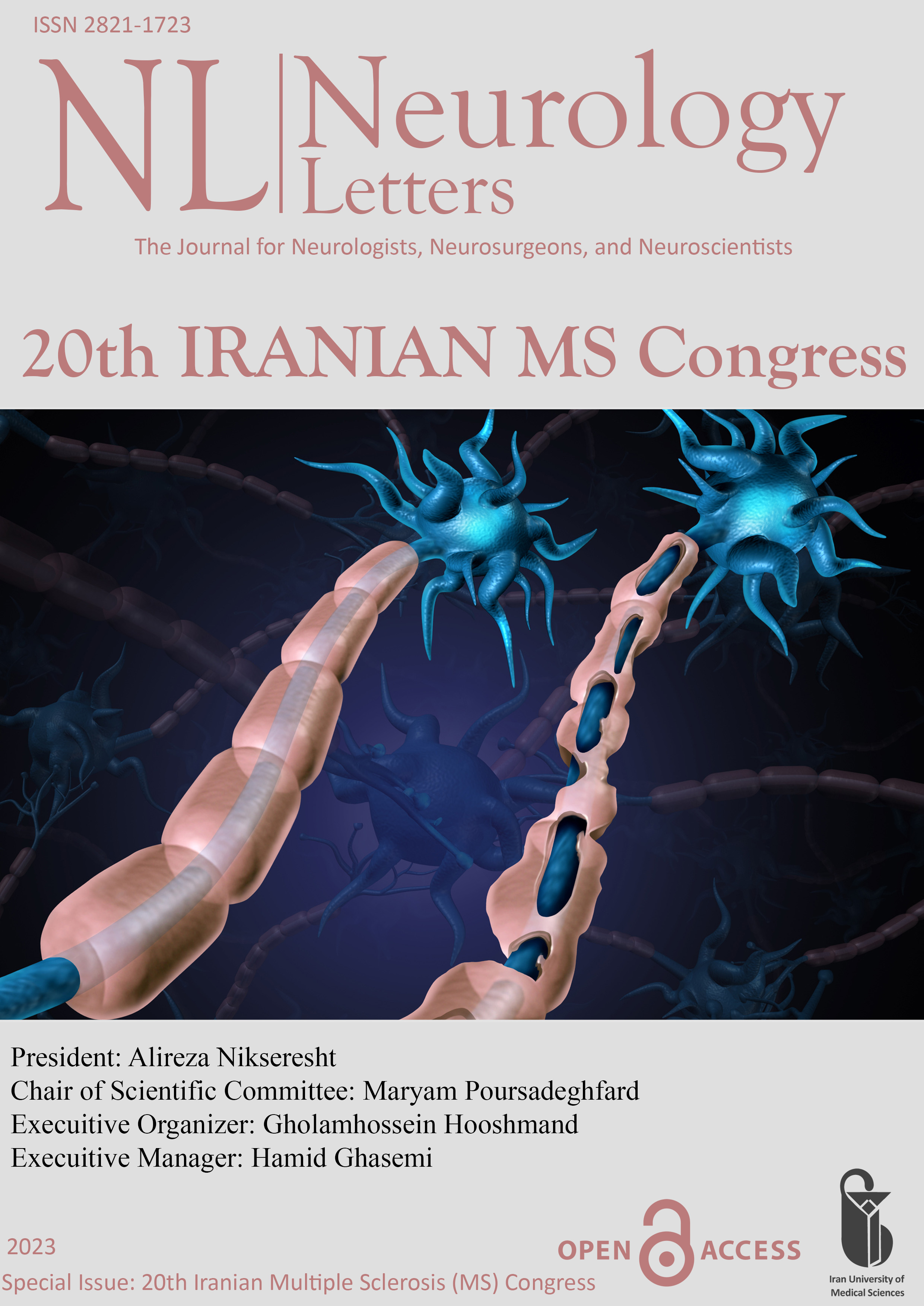Clinical Outcome and Volumetric MRI Assessment of Brain and Cervical Spinal Cord Area in Secondary Progressive Multiple Sclerosis Patients Treated with Rituximab: one-year follow-up (ORP-08)
Document Type : Oral Presentation
Authors
Department of Neurology, Isfahan University of Medical Sciences, Isfahan, Iran
Abstract
Background: Rituximab, a monoclonal antibody that targets and eliminates CD20+ B cells, has shown effectiveness in decreasing disease activity in patients with multiple sclerosis (pwMS). This study aimed to investigate disability, motor function, and volumetric magnetic resonance imaging (MRI) changes after one-year rituximab administration in secondary progressive MS (SPMS) patients.
Methods: This longitudinal prospective study was conducted from January 2019 to October 2020 on SPMS patients undertreatment with rituximab at the Kashani MS Clinic in Isfahan, Iran. Expanded Disability Status Scale (EDSS), timed 25- feet walk test (T25-FW), and 9-hole Peg test (9-HPT) were utilized to evaluate the disability status. All patients underwent disability assessment tests and brain MRI at the baseline and after one-year rituximab treatment. MRI measurements such as lesion load, cortical atrophy, and spinal cord atrophy at C2-C3 levels were assessed with the Siemens 1.5-tesla Avanto MRI machine. The Spearman correlation was performed to determine the association between disabilities and volumetric MRI factors.
Results: 31 pwMS were included (39.9±6.9 years, 64.5% females). PwMS receiving rituximab experienced stable MRI volumetric parameters, disability, and motor function. Deep white matter lesion volume was increased during follow-up (0.26±0.19 at baseline to 0.38±0.29 one year later). The mean EDSS, T25-FW, and 9-HPT did not change significantly after treatment with rituximab within 12 months (p > 0.05). Significant correlations were found between the white, gray matter volumes and the 9-HPT test of the left and right hand at follow-up (p < 0.05), as well as the T25-FW and the C1-C2 cross-sectional area at baseline (r=-0.444, p=0.016).
Conclusion: As a result of the administration of rituximab, disability, brain atrophy, cervical spinal cord area, and lesion load did not change significantly during 12 months in SPMS. The role of rituximab in SPMS management needs further research with longer follow-up.
Keywords
 Neurology Letters
Neurology Letters
